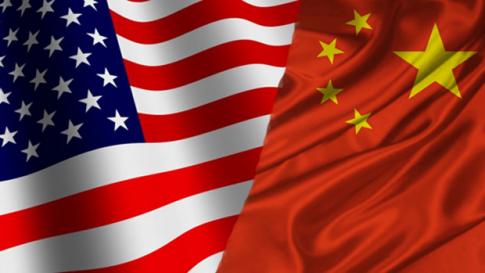The High Costs of the New Cold War

The Cold War of the twentieth century pitted two rival military alliances against ...
Minxin Pei
The new cold war against China will be won not through ideology or even weaponry, but through economic pressure, and the winning strategy will not be one that weaponizes only America’s greed. In this sense, by nickel-and-diming its allies, the US is effectively disarming itself.
LONDON – It is convenient to call the escalating geopolitical contest between the United States and China a “new cold war.” But that description should not be allowed to obscure the obvious, though not yet sufficiently understood, reality that this new competition will differ radically from the Cold War between the US and the Soviet Union.
The Cold War of the twentieth century pitted two rival military alliances against each other. By contrast, the Sino-American rivalry involves two economies that are closely integrated both with each other and with the rest of the world. The most decisive battles in today’s cold war will thus be fought on the economic front (trade, technology, and investment), rather than in, say, the South China Sea or the Taiwan Strait.
Some American strategic thinkers have recognized this, and now argue that, if the US is to win this cold war, it must sever its commercial ties with China – and persuade its allies to do the same. But, as the ongoing bilateral trade war demonstrates, this is easier said than done. Contrary to US President Donald Trump’s claim that it would be “easy to win,” that war has imposed such high costs, even as the US trade deficit continues to widen, that Trump now seems to be having second thoughts about further escalation.
If the US, with its strong geopolitical incentive, is struggling to bear the costs of an economic decoupling, its allies, most of which face no immediate Chinese security threat, will resist doing the same. Their reticence is obvious in their response to America’s aggressive campaign against the Chinese telecoms giant Huawei.
So far, that campaign has included the arrest (in Canada) of Huawei CFO Meng Wanzhou and legal action against the company for violating sanctions against Iran and for stealing US technology. The Trump administration has also called on allies to keep Huawei – the global leader in next-generation 5G mobile technology – out of their wireless communication networks.1
The case against entrusting Huawei to build 5G networks in Western countries is strong. Given the Chinese government’s unfettered power over the country’s companies, including Huawei technology in 5G networks could give rise to serious security risks. For countries that cannot afford the expensive equipment (and view Chinese domination as only a distant concern), those risks may be worth taking. But that is not the case for America’s wealthy allies.
Yet, so far, only Australia and New Zealand have complied with the US demand to ban Huawei. While Canada is considering joining them, European countries have defied the Trump administration, with the United Kingdom and Germany indicating that they would allow Huawei to participate in the construction of their 5G networks. South Korea and India have similarly resisted US pressure to exclude Huawei.
Despite the national security implications, the fact remains that banning Huawei would result in higher costs and significant delays. Yet the US has offered no rewards or compensation to its wavering allies.
This underscores a key challenge that the US will likely confront in the new cold war. Though America is likely ultimately to come out on top, victory will not come cheap. Isolating China economically – which is crucial to gaining the upper hand – will require the US not only to shoulder its own costs, but also to compensate its allies for the losses they incur.
Victory will not come fast, either, especially if the US remains so eager to secure short-term wins – such as Chinese promises to purchase large quantities of American soybeans and energy products – that it fails to encourage the systematic changes that would benefit it and its allies in the long run. Such opportunism makes US allies doubt America’s resolve in an economic confrontation with China, fueling fear that they will shoulder high short-term costs for nothing.
The Trump administration has already displayed an utter lack of concern for its allies’ economic interests. It is chiefly US allies that have been hurt by the Trump administration’s tariffs on steel and aluminum imports, and now the administration is threatening to go further, imposing a tariff specifically on European and Japanese automobiles. Trump has reportedly even been considering demanding that America’s allies pay the full cost, plus 50%, of stationing US troops on their territory.
Trump’s approach reflects not just a lack of loyalty, but also a lack of vision for sustaining, let alone strengthening, America’s own economic leverage. Recall that, almost immediately upon entering the White House, Trump withdrew from the Trans-Pacific Partnership, a free-trade agreement that sought specifically to prevent Chinese economic domination in the Asia-Pacific region.
The new cold war against China will be won not through ideology or even weaponry, but through the deployment of economic incentives to wage a geopolitical struggle. The winning strategy will not be one that weaponizes only America’s greed. By nickel-and-diming its allies, the US is effectively disarming itself. /project-syndicate




 del.icio.us
del.icio.us Digg
Digg

Post your comment